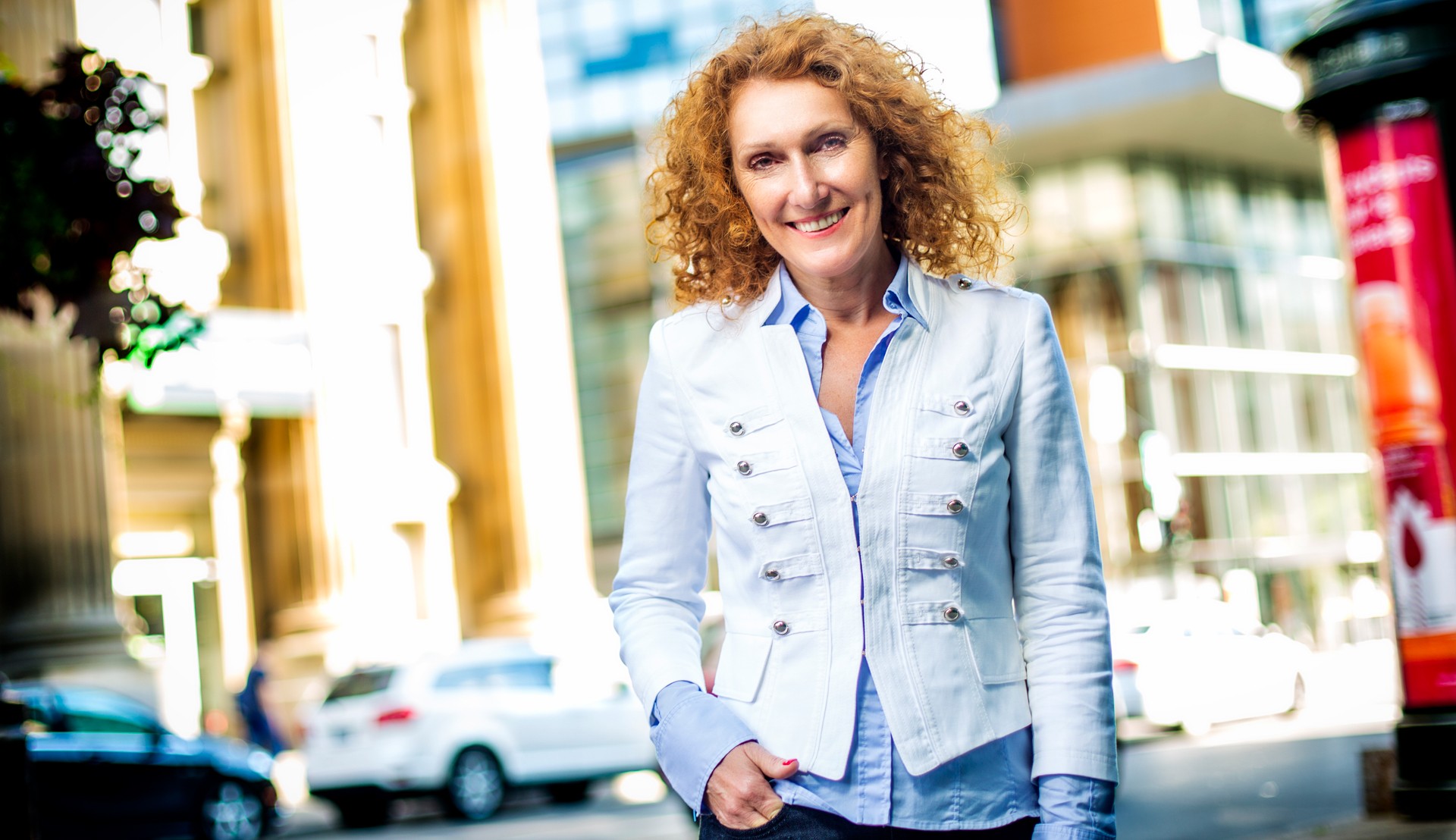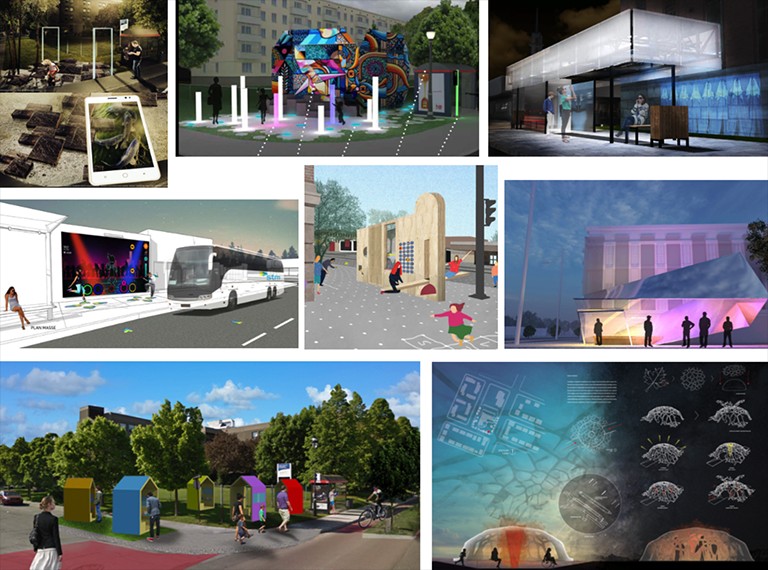Concordians develop a new guide that reimagines the experience of waiting for the bus

Most commuters see bus stops as grey zones where you either wait, stand in line or just miss your ride.
But they don’t have to be unwelcoming spaces at all, says Carmela Cucuzzella, professor of design and computation arts.
The Concordia University Research Chair in Integrated Design and Sustainability for the Built Environment (IDEAS-BE) (Tier 2) and founding co-director of the Next Generation Cities Institute, is part of an inter-university team that has found inspiration in these public spaces.
 Carmela Cucuzzella: “The aim is to make the experience of waiting for the bus more pleasant.”
Carmela Cucuzzella: “The aim is to make the experience of waiting for the bus more pleasant.”
Reimagining Waiting for the Bus, a free new guidebook she co-authored and just released, aims to stimulate public discussion and community engagement and, ultimately, imagine the potential of these small urban environments.
“The aim is not to redesign the bus shelter, but to make the experience of waiting for the bus more pleasant,” explains Cucuzzella.
“How can we make people feel like they’re doing more than just waiting for the bus is probably the question that best describes the challenge we’re taking on. And we ask how to do it in a sustainable way.”
The guide is richly illustrated and presents realizable ideas that encourage an appreciation of these urban spaces. It emphasizes the importance of nature, art and design.
The book is presented in partnership and supported by the municipal administration of the City of Montreal. It invites Montrealers to think about creative approaches — neighbourhood by neighbourhood, bus stop by bus stop — that would energize these public spaces in an interactive, poetic, critical and meaningful way: moving the immediate environment of bus stops from a merely functional to a multipurpose space.
‘Give back to society through unconventional ideas’
The initiative is part of a joint program between Concordia’s IDEAS-BE Research Chair and the Canada Research Chair in Architecture, Competitions and Mediations of Excellence of the Université de Montréal (CRC-ACME). This inter-university partnership aims to stimulate debates on the role of public spaces in highlighting climate change issues, while mobilizing citizen creativity in the fields of the built environment.
Having researched questions of sustainability in urban environmental design and architecture for many years, Cucuzzella has been one of the instigators and main coordinators behind the project.
“This is, before anything else, a research and creation project that is intended to be a social project, to give back to society through unconventional ideas, to give back to the community so they can express their own needs and ideas through the principles of others,” she says.
Although the city has not yet implemented any of the ideas suggested in the book, administrators say they are interested in working with communities using the ideas.
Yet because the COVID-19 pandemic has made people go back to their cars, the project feels even more urgent, for both her team and for the city, Cucuzzella adds. That trend must change.
“We want to encourage people to use the bus instead of their car, all year round.”
Reimagining Waiting for the Bus will be officially launched at a free event at Metro Frontenac on September 15 from 11 a.m. to 1 p.m. The publication will be made available online for free starting the next day, on the websites of the research chairs IDEAS-BE and CRC-ACME.
The book is edited by Carmela Cucuzzella, Jean-Pierre Chupin, Emmanuel Rondia and Sherif Goubran and published by Potential Architecture Books (Montreal, 2021). Éric Alan Caldwell, responsible for mobility at the City of Montreal, and Sarah Doyon, executive director of Trajectoire Québec, will join the book launch as special guests.



